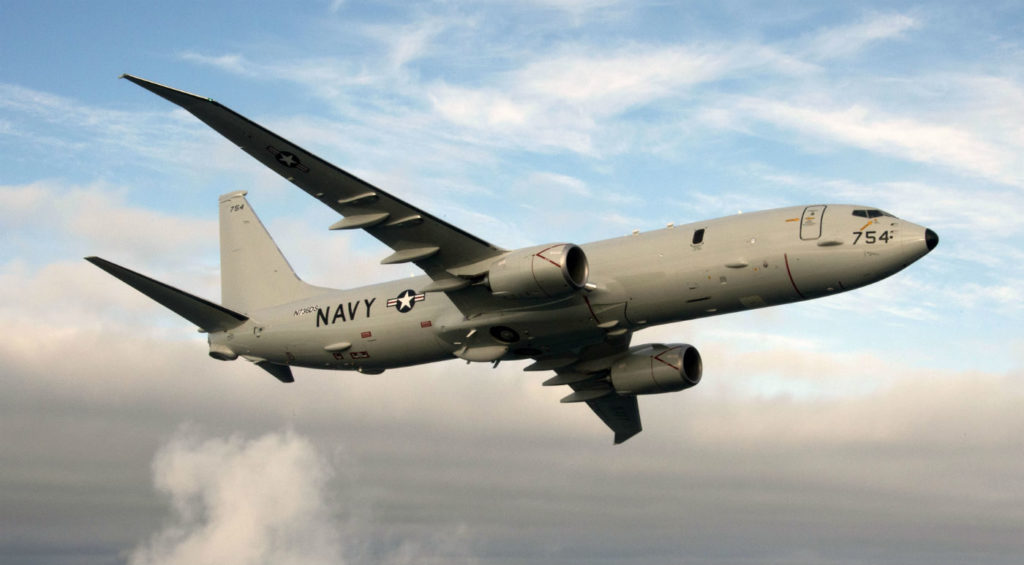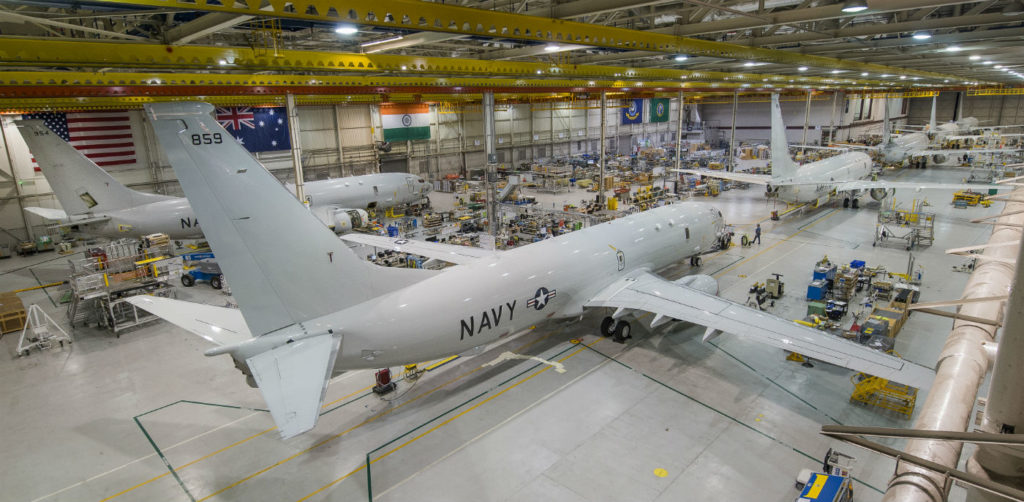Estimated reading time 6 minutes, 38 seconds.
The Royal Canadian Air Force (RCAF) might be years away from seeking proposals to replace the CP-140 Aurora long-range patrol aircraft, but Boeing Defense, Space & Security is positioning the P-8 Poseidon as a logical multi-mission progression.

Like the CP-140, which is based on the Lockheed Martin P-3 Orion airframe, the P-8 was purpose-built for anti-submarine warfare (ASW) but carries a sensor suite and other capabilities to perform anti-surface and ISR (intelligence, surveillance, reconnaissance) operations or serve as a C3 (command, control and communications) node anywhere in the world.
While RCAF commander LGen Mike Hood has publicly stated a desire to see that maritime and overland capability on a Canadian-built platform, such as a Bombardier C Series, Boeing believes the strength of its production line and supply chain, commonality with the U.S. Navy (USN), and a long-term growth plan with allies such as the U.K. and Australia, will make the P-8 an attractive fit.
“[Though] we feel the P-8 is the right aircraft for those countries [currently] flying the P-3, we will look to meet Canada’s needs as we get to know their requirements going forward,” said Matt Carreon, global sales and marketing lead for the P-8 program, at a recent media briefing.
To support the USN’s maritime mission requirements, the P-8 incorporates an integrated sensor suite that includes a multi-node radar, an electro-optic infrared camera, and electronic signal detection sensors to find, identify, locate, and track surface targets. For sub-surface targets, the suite includes an integrated acoustic sonobuoy launch and monitoring system.

Situational awareness, target and threat data is managed, shared and displayed on a robust digital communications suite that integrates SATCOM and line-of-sight radios, Inmarsat phone and a common data link.
And, in addition to 128 sonobuoys, the weapon suite features four AGM-84 Harpoon missiles and five torpedoes, as well as extensive countermeasures.
“The P-8 has really evolved into a multi-mission aircraft,” said Carreon, a former U.S. Navy tactical coordinator on the EP-3 and P-3 aircraft.
He added that an open architecture mission system and reserve power and cooling capacity were designed to accept future requirements or upgrades. The U.K., Australia and the USN, for example, have requested search and rescue capability. “The open architecture allows you to incorporate new and evolving technologies into the mission system to meet changing and evolving threats.”
The Poseidon is based on Boeing’s venerable 737-800 fuselage, with the longer wings of the Dash 900. Like the next generation variant, it features two 27,300-pounds thrust CFM56-7BE engines and claims a max takeoff gross weight of 198,200 pounds, and a combat radius of 1,200 nautical miles with four hours on station, with a full payload of over 22,000 pounds.

“No other aircraft can meet that combat radius for anti-submarine warfare,” said Carreon. “The P-8 is designed to be the most advanced ASW maritime mission aircraft in the world.”
With a commercial fleet of 737-800s that includes 4,000 aircraft in operation and 7,000 of the next-generation variant on order, Boeing is counting on fleet commonality to reduce production, maintenance and training costs for customers. “We were able to save over $2.1 billion in efficiencies [for the USN],” Carreon said, adding that the unit fly-away cost has decreased by 30 per cent since production began, “and we continue to refine that process.”
It is still early days for the Poseidon, which achieved initial operating capability in 2013, but the order book is starting to grow. Boeing is on contract for 80 aircraft to the USN, 50 of which have been delivered, but the service has indicated a requirement for 117. In addition, Australia requested eight, four of which have been approved and funded–the first was delivered in November; India signed a contract for eight in 2009 and added four more in July 2016; the U.K. confirmed plans for nine at last year’s Farnborough Air Show; and the U.S. State Department in December cleared the sale of five to Norway.
Whether the Poseidon is a cost-effective option for Canada remains to be seen, but it is being positioned to fulfil Canada’s multi-mission maritime and overland role.









If it is the best choice for Canada and the cost is right then Canada should get the Poseidon!